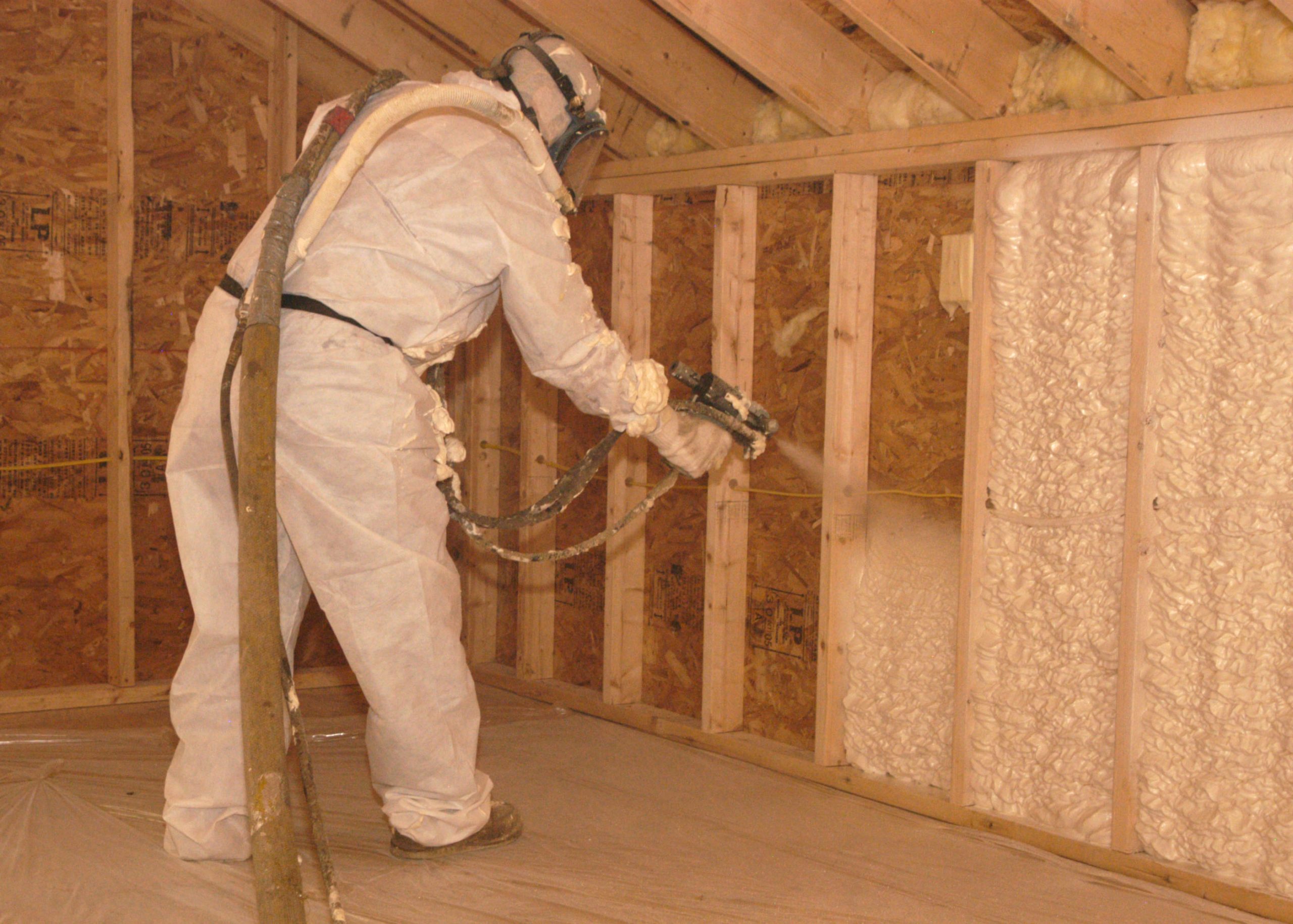Choosing the right spray foam insulation products for commercial properties affects building performance, energy efficiency, and long-term maintenance. Unlike residential applications, commercial spray foam insulation solutions must align with building codes, structural demands, and varied climate zones. Understanding the product options and their performance characteristics helps property managers, contractors, and developers make informed decisions that impact building durability and operational costs.
Understanding the Primary Spray Foam Options
Commercial spray foam insulation comes in two main types. Each serves different purposes depending on the structure’s use, location, and performance requirements.
Open Cell Spray Foam Basics
- Lightweight, with lower density
- Expands to fill large cavities
- R-value: ~3.6 per inch
- Allows some vapor permeability
Open cell spray foam works well for sound attenuation and moderate thermal resistance in interior spaces or non-load-bearing walls.
Closed Cell Spray Foam Attributes
- Dense and rigid structure
- Provides structural support
- R-value: ~6.5 per inch
- Effective vapor and moisture barrier
Closed cell foam is more suitable for commercial use, especially where moisture resistance and added structural integrity are required.
Factors That Influence Product Selection
Selection goes beyond just choosing between open and closed cell foam. Consider building code compliance, performance requirements, and safety ratings.
Climate and Building Envelope Performance
- Closed cell foam is often preferred in humid or cold climates
- Vapor barriers may be necessary in certain zones
- Air sealing performance varies by product type
Fire Safety and Code Compliance
- Must meet ASTM E84 fire safety standards
- Products should carry Class A flame spread ratings for commercial structures
- Fire-retardant additives or thermal barriers may be required
Compatibility with Commercial Construction Materials
- Foam must adhere properly to concrete, steel, masonry, or wood
- Primer use may be necessary for metal or glossy surfaces
- Substrate moisture and temperature affect application
Comparing Key Product Features Side-by-Side
Application Requirements and Installation Environment
Spray foam installation must match building use, budget, and environmental conditions. Improper conditions can cause poor adhesion or off-ratio foam.
Installation Temperature and Moisture Considerations
- Ideal substrate temperature: 60–80°F
- Ambient humidity and surface moisture impact foam performance
- Some products are formulated for low-temp or high-humidity conditions
Thickness and Layering Practices
- Closed cell often applied in 1-inch lifts to manage heat buildup
- Open cell can be sprayed in thicker layers
- Proper cure time and inspection between layers improve performance
Energy Efficiency and Long-Term ROI
Spray foam products directly influence HVAC demand and maintenance cycles in commercial buildings.
High R-Value Foam Reduces Energy Loads
- Closed cell spray foam can reduce energy bills by up to 40%
- High R-value per inch enables thinner insulation in tight cavities
- Minimizes thermal bridging across framing
Moisture Control Reduces Mold and Repairs
- Closed cell foam blocks moisture infiltration in basements and roof decks
- Prevents condensation in mixed-use or climate-sensitive zones
- Extends roof life and wall integrity
Chemical Composition and Material Standards
Commercial foam products must be evaluated not just for performance but also for formulation safety and certification.
Compliance with Industry Standards
- Look for third-party certifications (e.g., Greenguard Gold, UL)
- Verify formulation meets LEED or VOC limits for indoor air quality
- Check if foam complies with the International Building Code (IBC)
Chemical Stability and Long-Term Performance
- Polyurethane-based foams have long life spans
- Dimensional stability reduces shrinkage over time
- Closed cell formulas resist breakdown from UV exposure (when coated)
Project-Specific Considerations for Contractors
No two commercial properties have identical insulation needs. Tailor product selection to project goals and site constraints.
Wall Type and Assembly
- Metal frame structures often require higher R-values and vapor barriers
- CMU block walls benefit from closed cell foam for air sealing
- Wood-framed commercial interiors may use open cell to reduce cost
Use of Hybrid Systems
- Combine open cell in interiors and closed cell on exteriors
- Use rigid board insulation with spray foam for roofing
- Spray foam complements other envelope upgrade
Conclusion
Choosing the right commercial spray foam product starts with understanding the differences between open and closed cell formulas. Closed cell foam offers greater thermal performance, moisture protection, and structural reinforcement—making it ideal for most commercial environments. Open cell foam, though less dense, has its place in interiors where sound dampening and budget control matter.
Selection should be based on local climate, building codes, material compatibility, and long-term energy goals. Always check chemical standards, installation conditions, and safety ratings before finalizing a product. A material that looks good on paper but is poorly matched to site conditions or installed incorrectly can lead to higher costs later. With proper planning and expert spray foam insulation services, you can prevent energy loss, rework, or future warranty claims.
FAQs
What’s the difference between commercial and residential spray foam? Commercial spray foam typically requires higher fire ratings, stronger structural support, and moisture control. It’s applied at a larger scale and must meet more stringent building codes.
Can open cell spray foam be used in commercial buildings? Yes, but usually in interior spaces where moisture resistance isn’t critical. It's useful for interior walls, ceilings, and soundproofing in commercial facilities.
How does spray foam contribute to energy efficiency in large buildings? Closed cell foam reduces air leakage and has a high R-value per inch, which decreases HVAC demand and enhances thermal stability in large structures.
Are there spray foam options with low environmental impact? Several manufacturers offer low-VOC and Greenguard-certified products suitable for projects pursuing LEED or indoor air quality standards.
What should be inspected before applying spray foam in a commercial building? Inspect surface moisture, ambient temperature, material compatibility, and substrate conditions. Always confirm building code requirements for fire resistance and vapor control.
Reviewer
Michael Carter reviewed this article using insight gained over 12 years in the spray foam business. His feedback focused on helping contractors reach new customers without overcomplicating their message.






Comments